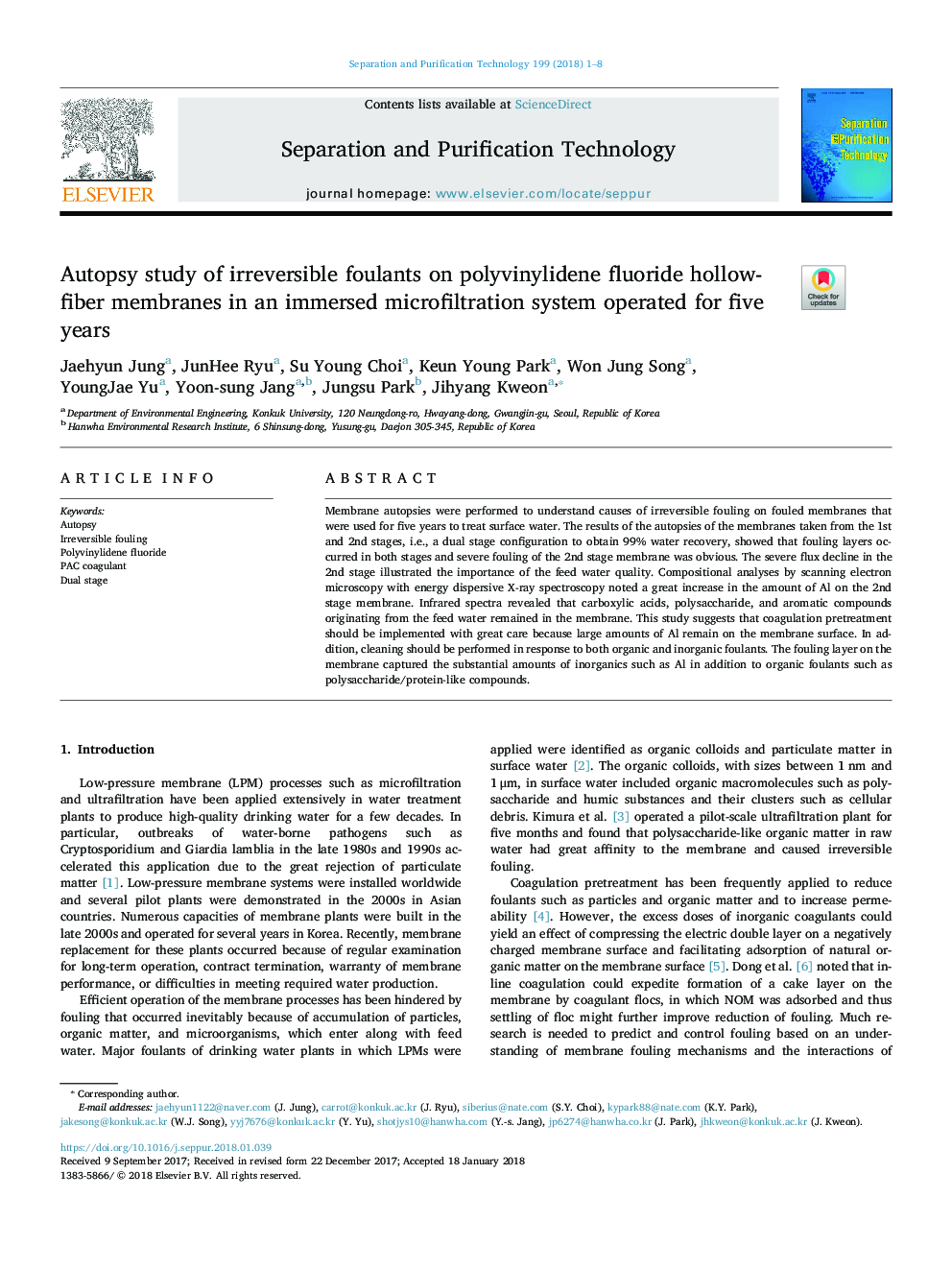| Article ID | Journal | Published Year | Pages | File Type |
|---|---|---|---|---|
| 7043829 | Separation and Purification Technology | 2018 | 8 Pages |
Abstract
Membrane autopsies were performed to understand causes of irreversible fouling on fouled membranes that were used for five years to treat surface water. The results of the autopsies of the membranes taken from the 1st and 2nd stages, i.e., a dual stage configuration to obtain 99% water recovery, showed that fouling layers occurred in both stages and severe fouling of the 2nd stage membrane was obvious. The severe flux decline in the 2nd stage illustrated the importance of the feed water quality. Compositional analyses by scanning electron microscopy with energy dispersive X-ray spectroscopy noted a great increase in the amount of Al on the 2nd stage membrane. Infrared spectra revealed that carboxylic acids, polysaccharide, and aromatic compounds originating from the feed water remained in the membrane. This study suggests that coagulation pretreatment should be implemented with great care because large amounts of Al remain on the membrane surface. In addition, cleaning should be performed in response to both organic and inorganic foulants. The fouling layer on the membrane captured the substantial amounts of inorganics such as Al in addition to organic foulants such as polysaccharide/protein-like compounds.
Related Topics
Physical Sciences and Engineering
Chemical Engineering
Filtration and Separation
Authors
Jaehyun Jung, JunHee Ryu, Su Young Choi, Keun Young Park, Won Jung Song, YoungJae Yu, Yoon-sung Jang, Jungsu Park, Jihyang Kweon,
